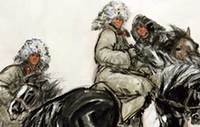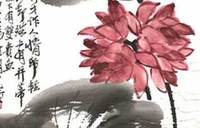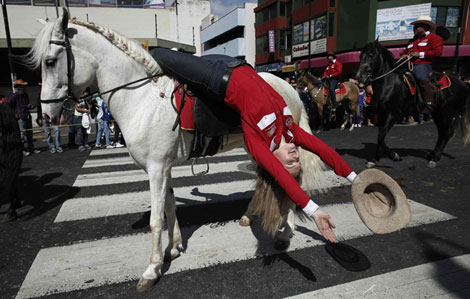Art fair focuses on Asia
Updated: 2013-12-27 09:43
By Zhang Zixuan (China Daily)
|
|||||||||||
|
 |
|
 |
|
 |
The artist uses tofu, a traditional Chinese food with a history of 2,000 years, to recreate the Chinese characters of the 100 Chinese family surnames, which also play an important historical role. The symbolic act draws together these two ancient traditions in a creative way.
Chinese artist Wang Guofeng, presented by De Sarthe Gallery in Hong Kong, will introduce his print work to explore the power of images and text.
In 2011,Wang was officially invited by the Democratic People's Republic of Korea to photograph the country's socialist architecture and in 2012,the 100th anniversary of Kim Il-sung's birth. The experiences gave birth to a new series of artworks.
Speaking of the contemporary art scene in the Asia-Pacific region by using China as an example, China Platform director Huang believes the new-generation artists' way of production and expression is transforming. "They emphasize the individualized language and the microcosmic method of art practice to demonstrate their force and strength," he says.
The Taiwan Platform has also taken a similar move. All four exhibited galleries there bring artists with art-works in new mediums, such as video and mixed media.
"Taiwan is known for its advancement in technology, which many artists are relying on," Taiwan Platform curator Rudy Tseng explains.
For example, artist Tu Wei-cheng, presented by Tina Keng Gallery in Taipei and Beijing, brings one of his mixed-media installations named The Emperor's Treasure Chest-Two.
The Emperor's Chest is a series of antique-like screening machines made by Tu. He incorporates old film and animation techniques, such as shadow puppets, kaleidoscopes and magic lantern slides, and transforms them to create a theatrical display of modern scenes of cities and inhabitants.
"We are today in a time that the two directions-the market and the academic part-are going further a way from each other. But if we want to introduce an artwork, we have to introduce more than only a price to truly understand the art-work. That's why we must bring the market and the content together, and that's exactly what we try to achieve through these platforms," concludes Rudolf, the founder and director of Art Stage Singapore.
Related Stories
Int'l book fair, literary festival open in Bulgaria 2013-12-12 10:37
SE Asia Pu'er Tea Trade Fair kicks off in Malaysia 2013-11-19 14:32
Art Taipei 2013: longest-running art fair in Asia 2013-11-09 13:51
Int'l Contemporary Art Fair opens in Paris 2013-10-24 16:26
Jinan fair could be your cup of tea 2013-10-22 16:31
Today's Top News
Chinese students in US take the road to luxury
China to take free navigation system global
Country's hepatitis B vaccines are safe: WHO
War shrine visit fury mounts
ODI on track to outstrip FDI
NSA phone program lawful: judge
China reports 12th vaccine-related death
Natural disasters kill 1,181 in China this year
Hot Topics
Lunar probe , China growth forecasts, Emission rules get tougher, China seen through 'colored lens', International board,
Editor's Picks

|

|

|

|

|

|





